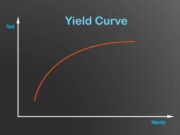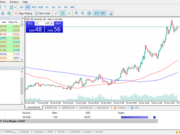Definition
Calmar ratio is a performance measurement used to evaluate Commodity Trading Advisors and hedge funds. It was created by Terry W. Young and first published in 1991 in the trade journal Futures.
Calmar Ratio
What is the ‘Calmar Ratio’
The Calmar ratio is a comparison of the average annual compounded rate of return and the maximum drawdown risk of commodity trading advisors and hedge funds. The lower the Calmar Ratio, the worse the investment performed on a risk-adjusted basis over the specified time period; the higher the Calmar Ratio, the better it performed. Generally speaking, the time period used is three years, but this can be higher or lower based on the investment in question.
Explaining ‘Calmar Ratio’
Developed by Terry W. Young in 1991, the Calmar Ratio is short for California Managed Account Reports. The ratio is very similar to the MAR Ratio, which was formulated much earlier. The only difference is that the MAR Ratio is based on data produced from the inception of the investment, whereas the Calmar Ratio is typically based on more recent and shorter-term data. Regardless of which ratio is used, investors gain better insight as to the risk of various investments.
Calmar Ratio FAQ
How is Calmar ratio calculated?
Further Reading
- Common Metrics for Performance Evaluation: Overview of Popular Performance Measurement Ratios – papers.ssrn.com [PDF]
- Trading futures spread portfolios: applications of higher order and recurrent networks – www.tandfonline.com [PDF]
- An adaptive portfolio trading system: A risk-return portfolio optimization using recurrent reinforcement learning with expected maximum drawdown – www.sciencedirect.com [PDF]
- Volatility filters for asset management: An application to managed futures – link.springer.com [PDF]
- Catastrophe risk analysis: A financial perspective – www.tandfonline.com [PDF]
- Robust evidence on the similarity of Sharpe ratio and drawdown-based hedge fund performance rankings – www.sciencedirect.com [PDF]
- Bitcoin bubble trouble – papers.ssrn.com [PDF]
- A comparison among Reinforcement Learning algorithms in financial trading systems – papers.ssrn.com [PDF]


































